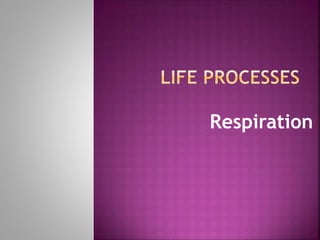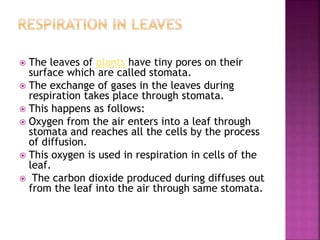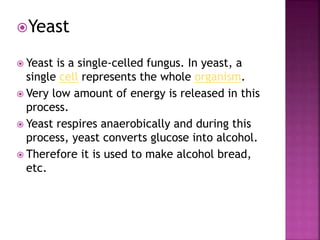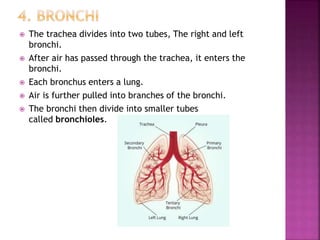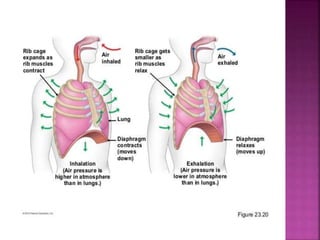Respiration is the process by which organisms obtain energy from food through biochemical oxidation. In plants and animals, respiration occurs through the exchange of gases between organisms and their environments. In humans and other animals, respiration occurs through inhalation of oxygen into the lungs and exhalation of carbon dioxide. The respiratory system involves the nose, pharynx, larynx, trachea, bronchi, bronchioles and alveoli where gas exchange occurs.
